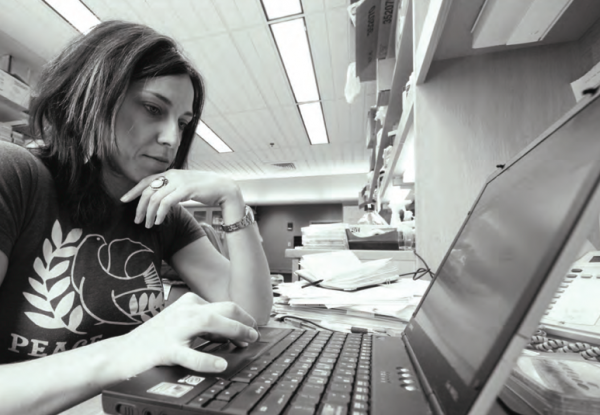 HSCI researchers have taken a major step toward eventually understanding — and perhaps slowing — the aging process.
HSCI researchers have taken a major step toward eventually understanding — and perhaps slowing — the aging process.
HSCI Principal Faculty member Amy Wagers, PhD, and colleagues have demonstrated that the stem cells of old mice exposed to certain factors present in blood from young mice begin to act like young stem cells, with the process driven by signals from another type of cell nearby in the bone. In fact, not only do the blood stem cells begin to take on characteristics of younger cells, but the tissues of old mice exposed to this yetto-be-identified factor or factors appear to be much more “youthful.”
This latest work, published in the journal Nature, advances the understanding of aging of the blood-forming, “hematopoietic” system and points toward ways to treat age-related ailments via the blood.
HSCI Co-Director Doug Melton, PhD, called the findings “important,” explaining that “the paper shows that cells and their ‘homes,’ known as the niche, both deteriorate with age. While that may not be a surprise, what is a source of amazement is the demonstration that young animals, through the action of insulin-like growth factor 1(IGF-1), can turn back the clock and rejuvenate aged blood cells.”
Previous work by other labs gave evidence that the decline in blood stem cell function that comes with age is partly intrinsic to the cells themselves. However, these cells also are affected by signals from other cells in the local bone marrow microenvironment, or “niche.” An earlier study led by Shane Mayack, PhD, a postdoctoral fellow in Wagers’s lab, pinpointed bone-forming cells known as osteoblasts as key players in this signaling from the niche, and showed that osteoblasts play a particular role in blood stem cell maintenance and regeneration.
For the latest paper, Mayack and her colleagues studied the blood stem cell aging process in young and old mice. The researchers found that, as osteoblasts age, they change the signals that they send to stem cells, and that this change makes those cells less able to produce the right mixture of blood cells.
More dramatically, in a series of tests in which two mice shared a common blood circulation, the scientists revealed that this aging mechanism could be reversed. In old mice paired with young mice, the existing populations of osteoblasts showed signs of rejuvenation. Remarkably, this rejuvenation was communicated to the stem cells as well, such that the blood-forming abilities of these aged mice took on much more “youthful” characteristics.
“What’s most exciting is that the changes that occur in blood stem cells during aging are reversible, through signals carried by the blood itself,” said Wagers. “This means that the blood system offers a potential therapeutic avenue for age-related stem cell dysfunction.”
“These findings open up exciting new avenues of research, including the potential for studying other types of tissues that aren’t as well understood, in which aging may be regulated by stem-niche cell interactions in a similar way,” said Mayack. “Over time, these findings may also influence the way blood disorders are treated.”
As a next step, investigators will hone in on how signals sent to and from osteoblasts are altered as the cells age. The team has begun by examining the role of IGF-1, a protein that other studies have shown can aid in regenerating skeletal muscle. To their surprise, they found that they could partially correct aging defects in osteoblasts by suppressing IGF-1, rather than enhancing it. “This difference highlights the complexity of the controls that are involved in cell regeneration,” Wagers said.
